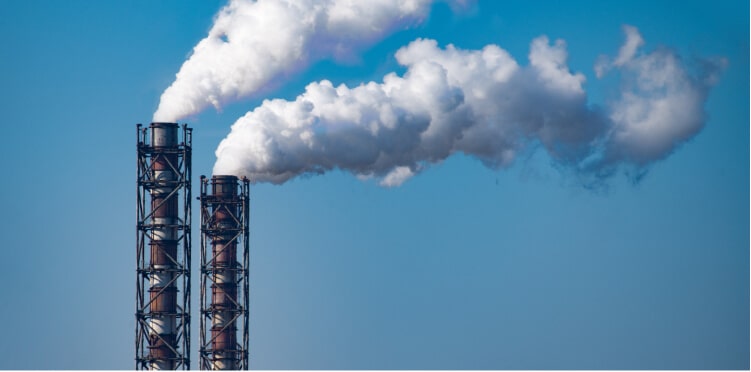Hyundai Motorstudio Senayan Park
Hyundai Motorstudio Senayan Park
Newsroom
-
Understanding Blue Carbon to Cope With Climate Change
- Hyundai Motorstudio Senayan Park 2022.09.02
-
Carbon smoke from vehicle exhaust is generally known to the public as solid black or white color. But, actually there is a term blue carbon. Do you know what blue carbon is?
So, blue carbon is a term to refer to the carbon produced by marine and coastal ecosystems. This type of carbon is called blue because it is formed in the oceans or under water.
Examples of blue carbon-forming ecosystems are mangroves, swamps, peat, coral reefs, and phytoplankton that can produce and store blue carbon.
Blue Carbon As a Savior of the Earth From Underwater
In Indonesia itself, the blue carbon produced is quite large. Considering that almost 62% of the total area of Indonesia is a maritime area or an archipelagic country.
The existence of mangrove forests in Indonesia is known as the largest blue carbon producing ecosystem in the world, reaching 17% of the total global blue carbon.
In addition to blue carbon, on planet earth there are several types of carbon. Each carbon is distinguished by its source.
There is black carbon and brown carbon produced by greenhouse gas emissions and carbon dioxide (CO2) emissions. These two types of carbon are the cause of climate change or global warming.
Meanwhile, there are two other types of carbon that function as an antidote to the effects of climate change, namely blue carbon and green carbon.
Green carbon is stored or absorbed by soil and plants. Various efforts, such as forest conservation and planting thousands of trees in urban areas, have become tangible ways to reduce the impact of climate change .
However, so far, public awareness to increase blue carbon production in preventing climate change is still minimal. It is unfortunate, because blue carbon is able to absorb 55% of global carbon emissions, much more than the absorption of green carbon on land.
Blue Carbon Plays a Role in Absorption of Greenhouse Gas Effects
Blue carbon is the most effective natural absorber of carbon dioxide. Tropical rainforests, savanna grasslands, and continental forests are considered as carbon sink biological systems.
However, forests can only absorb carbon in the surrounding ecosystem. Meanwhile, blue carbon plays an important role in carbon sequestration and storage. Especially, in coastal ecosystems, such as mangrove forests, swamp forests, seaweed, peatlands, and others.
Unfortunately, awareness of the potential of blue carbon is still very minimal. Many hotel or resort developments on the coast reduce the level of blue carbon absorption.
Here are some blue carbon ecosystems in coastal areas:
1. Mangrove Forest
It may be difficult to imagine how important the role of mangroves in sequestering carbon emissions is. In fact, mangrove forests are able to absorb 6-8 tons of carbon dioxide equivalent per hectare. Meanwhile, tropical rain forests are only about 2 tons of carbon dioxide equivalent per hectare.
This means that mangrove forests are more effective in absorbing carbon naturally. Many tropical forests are protected such as the Amazon forest, Southeast Asian forests, Kalimantan forests, Central African forests and others.
Meanwhile, many mangrove forests are neglected. Meanwhile, if you think about it, mangroves absorb more carbon. In addition, mangroves provide many previously unanticipated benefits. For example, it can prevent coastal erosion, protect the coast from storms, reduce wave abrasion, can be used as a fish nursery, and of course absorb greenhouse carbon emissions.
2. Swamp Forest
Similar to mangroves, swamp forests are coastal ecosystems that play an important role in preventing climate change. Swamp forests maintain local soil conditions and water sources.
On the other hand, swamp forests are located around coastal streams or rivers that filter pollutants. Therefore, swamp forests can maintain water quality in coastal areas and function as wildlife ecosystems. For example, fish, shellfish, seagulls, and various other fauna.
Most importantly, swamp forests are capable of sequestering up to 7 tonnes of carbon dioxide equivalent per hectare.
3. Seagrass
Seaweed or seagrass habitat is a blue carbon ecosystem that is often underestimated. In fact, there are many benefits for the environment that were never anticipated before.
Seaweed stretches widely on the surface of the shallow sea and continues to spread in the marine environment. Usually, found in tropical waters. Seaweed helps stabilize the conditions of marine microorganisms, provides shelter for fish, and is a food source for marine mammals such as mermaids and manatees.
In addition to the ability to absorb carbon emissions up to twice as large as tropical forests, seaweed prevents climate change with blue carbon. The seaweed population may be only 0.2% of the seabed, but it is capable of absorbing up to 10% of the carbon in the oceans each year.
Blue Carbon And Renewable Energy As An Environmentally Friendly Solution
So, what can we do to increase global carbon sequestration with blue carbon? This of course will not be optimal if it only relies on the government.
Support from the entire community globally is needed to reduce the impact of climate change. People need to realize that it turns out that nature has great potential to absorb greenhouse carbon emissions and overcome global warming.
One of them is by combining environmentally friendly solutions such as blue carbon in collaboration with renewable energy generators. A low-carbon future is not just a dream.
This is the time for everyone to work together to preserve coastal ecosystems around the world, so that they can act as renewable energy generators. Prevent excessive exploration and development on the coast so that marine ecosystems are maintained as a maximum absorber of carbon emissions.




